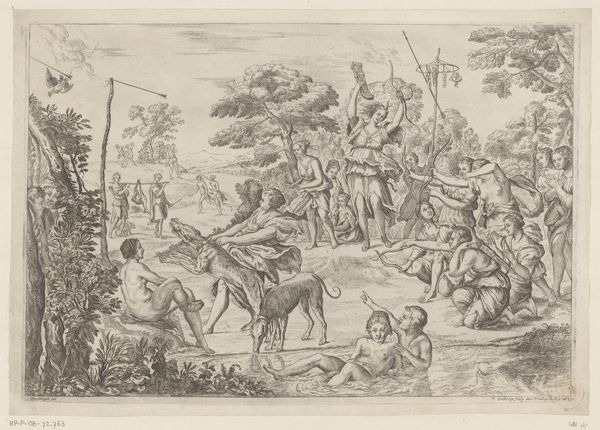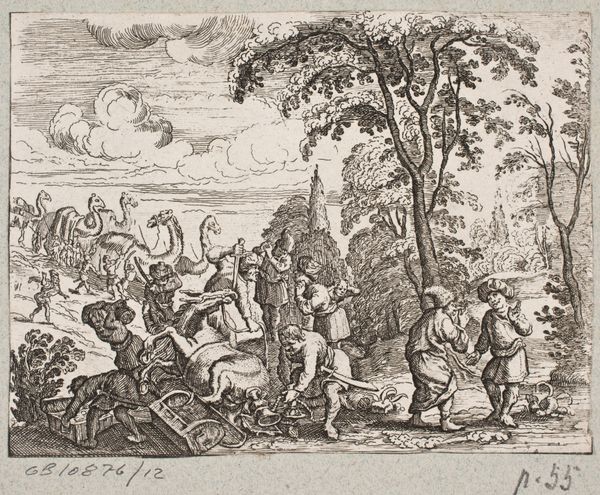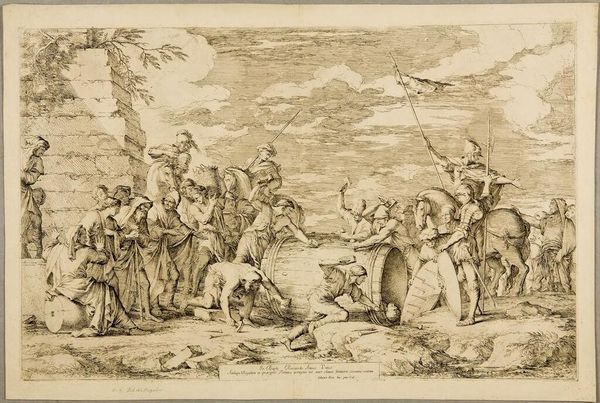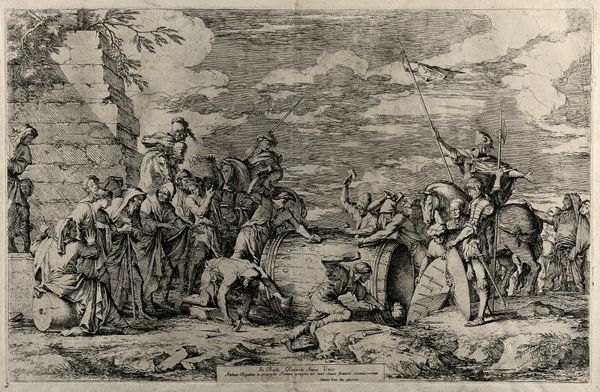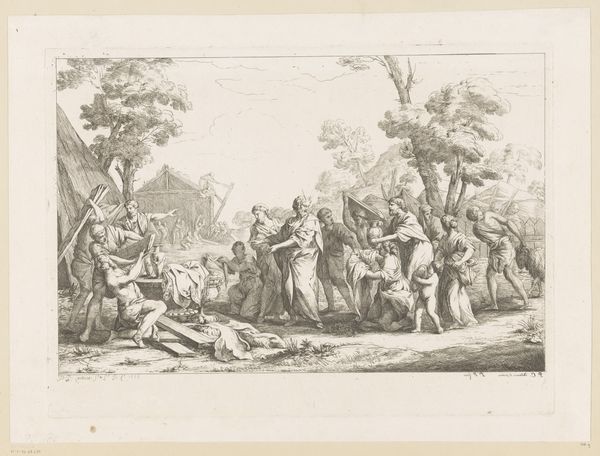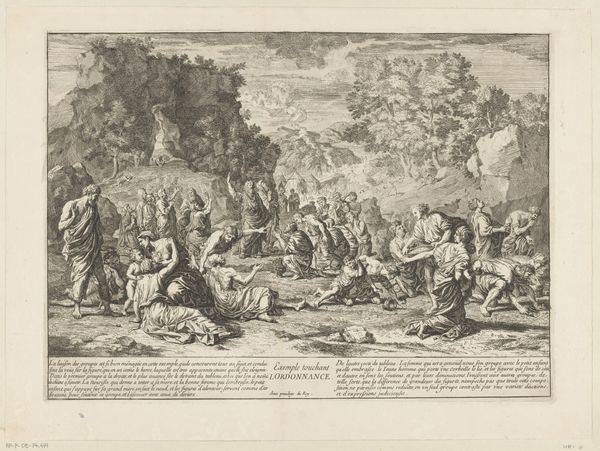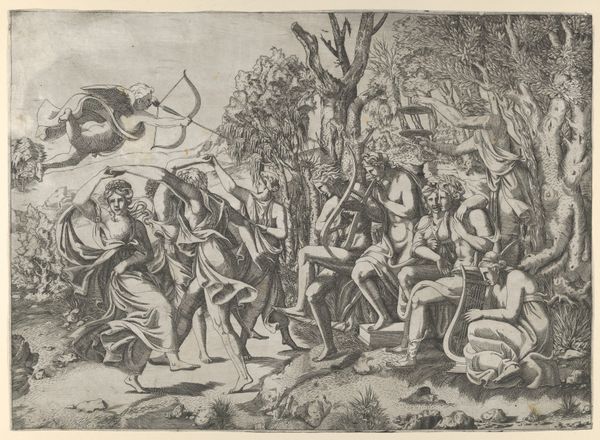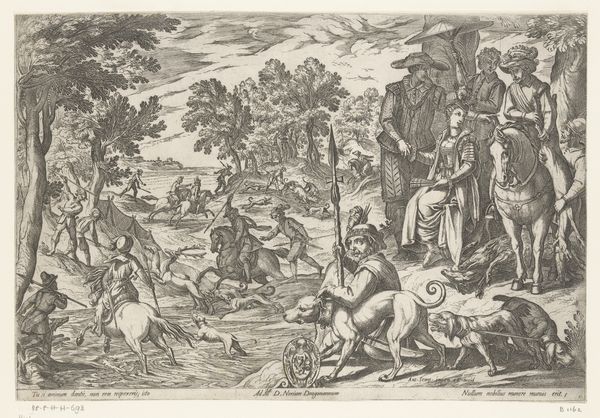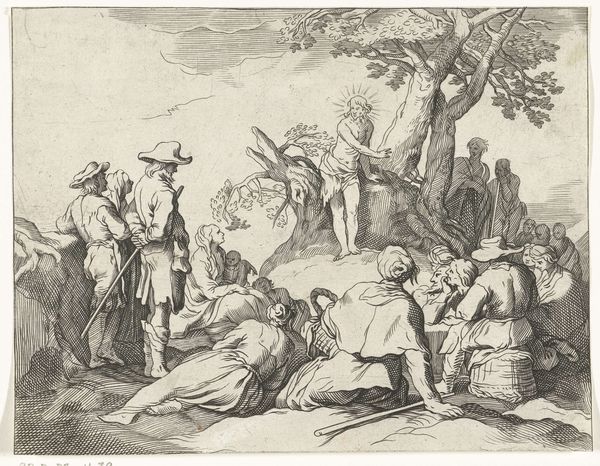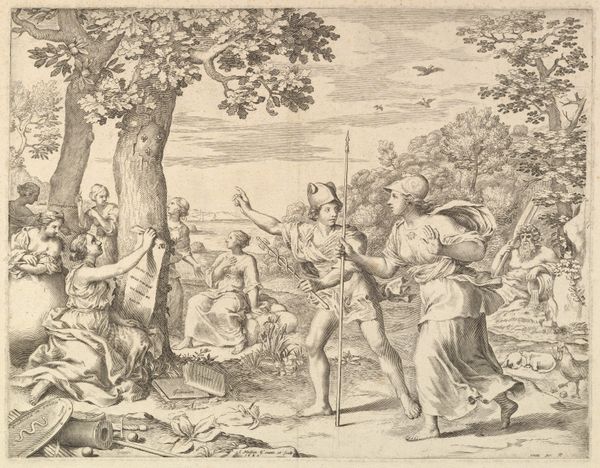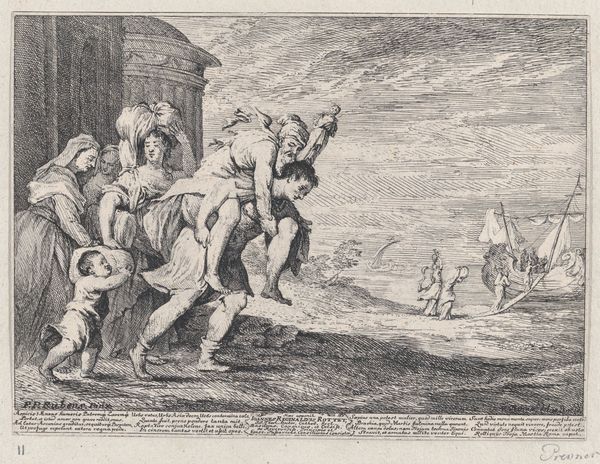
The death of Marcus Atilius Regulus, showng being nailed into a tub by the Carthaginians 1656 - 1666
0:00
0:00
drawing, print, etching, engraving
#
drawing
#
narrative-art
#
baroque
# print
#
etching
#
caricature
#
figuration
#
romanesque
#
history-painting
#
engraving
Dimensions: sheet: 22 5/16 x 30 1/2 in. (56.6 x 77.4 cm) plate: 18 3/16 x 28 1/2 in. (46.2 x 72.4 cm)
Copyright: Public Domain
Curator: At first glance, there's an odd frantic energy here, isn't there? All these bodies, this strange... barrel situation. A bit gruesome. Editor: You're right, it does have a frantic feel. We are looking at "The Death of Marcus Atilius Regulus, Shown Being Nailed into a Tub by the Carthaginians," an etching by Salvator Rosa from the mid-17th century. Rosa, of course, was interested in pushing emotional boundaries, portraying the intense realities of the human experience. Curator: Boundaries certainly pushed! It looks like someone’s having a very, very bad day involving a rather large pickle barrel. But even in this crude scene, that one figure looking down, almost mournful. The lines there are striking, aren't they? Editor: Absolutely. Rosa often used historical subjects to comment on contemporary politics. Regulus was a Roman general captured by the Carthaginians and, according to legend, tortured and killed. It speaks volumes, I think, about political betrayal. Curator: Ah, betrayal! Suddenly the pickle barrel seems like a less random torture device. It's about confinement, about the agonizing slowness of injustice. Did people then understand these Roman references immediately, or were they also just drawn to the violence of the scene? Editor: That’s a crucial point. The Roman story would have provided a framework, but Rosa's emphasis on dramatic gestures and emotional extremes made the image impactful even without detailed historical knowledge. The image became more about political injustice and barbarity, generally speaking. Museums shape our modern relationship to the images by placing them in this historic and aesthetic lineage. Curator: Right. I suppose you don't need to know your Livy to get a sense of 'this is BAD’. But thinking about its placement in the Met today, it gains another layer. Is it a caricature of institutional failures and artistic license? Editor: Well, perhaps. We, viewers, complete a circuit across time as the museum displays and protects an understanding of barbarity, a brutal tale etched in lines that still prick our consciences centuries later. Curator: Yes, a stark reminder that history—and art—can sometimes leave a really, really bad taste in your mouth. Or a splinter in your soul. Editor: Indeed. Rosa forces us to grapple with those historical splinters, making this image not just a historical record but also a provocation.
Comments
No comments
Be the first to comment and join the conversation on the ultimate creative platform.
